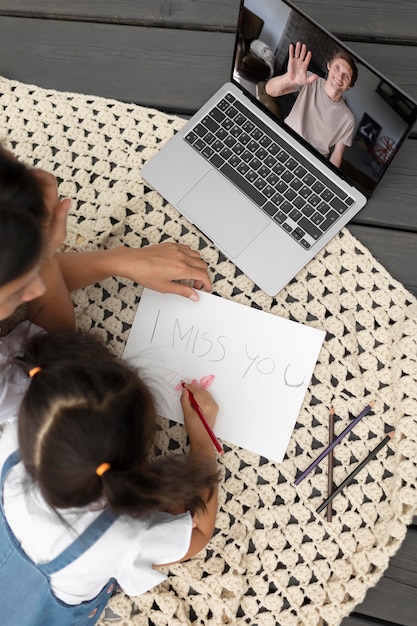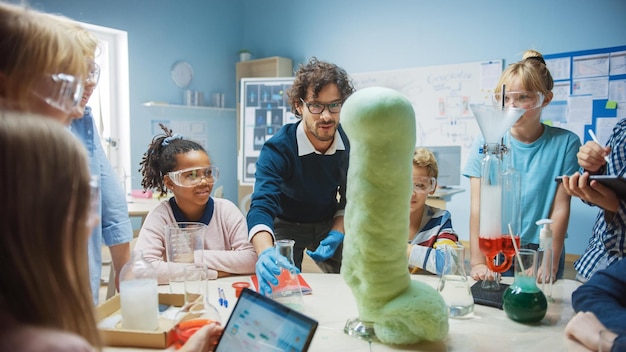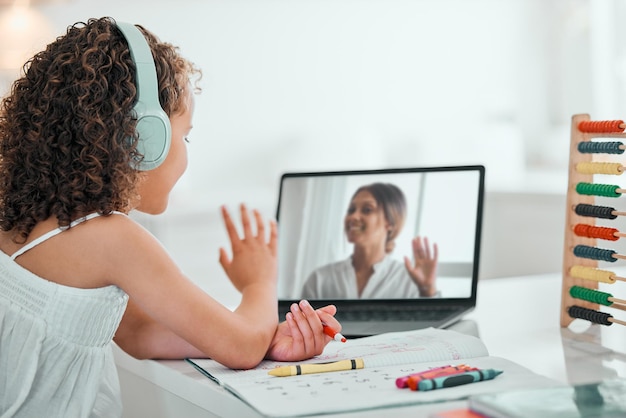Traditional vs. Online Learning: Choosing the Right Path for Your Child in 2025

Comparing traditional and online learning to determine which educational approach is best for your child in 2025 involves considering factors like learning styles, social interaction, technology access, and the evolving educational landscape.
Choosing the right educational path for your child is a crucial decision. As we approach 2025, the options have expanded beyond the traditional classroom setting. This article provides a comparison: traditional vs. online learning – which is right for your child in 2025?.
Understanding Traditional Learning
Traditional learning, the cornerstone of education for generations, involves in-person instruction within a structured classroom setting. This model fosters direct interaction between students and teachers and builds a sense of community through shared experiences.
It’s important to consider how traditional learning can shape a child’s academic experience.
The Structure of Traditional Classrooms
The traditional classroom offers a predictable environment. This established structure can benefit children who thrive on routine and clear expectations.
Social Interaction and Collaboration
Direct interaction is a key component. Students learn to collaborate, communicate, and build relationships with peers and teachers face-to-face.
- Promotes social skills: In-person interactions support the development of essential social skills.
- Encourages teamwork: Group projects and classroom activities foster collaboration.
- Builds relationships: Direct contact facilitates the formation of strong relationships with teachers and classmates.

Traditional learning is often characterized by a fixed curriculum, standardized assessments, and a physical learning environment. While it offers several advantages, it’s important to consider its potential drawbacks when considering:
- Inflexibility: The fixed schedule and curriculum may not cater to individual learning paces.
- Limited personalization: Traditional classrooms might struggle to provide tailored instruction to meet diverse learning needs.
- Dependence on location: Access to quality education is often tied to geographic location and school district funding.
In summary, traditional learning provides a structured, social, and community-oriented educational experience, offering a predictable and familiar environment for children to learn and grow.
Exploring the World of Online Learning
Online learning, also known as e-learning or remote education, leverages digital technologies to deliver instructional content and facilitate interaction between students and teachers. With increasing internet access and advancements in educational software, online learning has become a mainstream option for K-12 students.
This method offers a wide variety of possibilities for personalized education.
Flexibility and Customization in Online Learning
One of the key advantages includes its flexibility. Students can often learn at their own pace and according to their own schedules.
Access to Resources and Diverse Curriculum
Online platforms provide access to diverse learning materials, including videos, interactive simulations, and virtual field trips. Students can explore specialized subjects not always available in traditional schools.
- Expansive curriculum: Access to a wider range of courses and subjects.
- Personalized learning paths: Customized instruction based on individual learning styles and needs.
- Convenient scheduling: Flexible schedules that accommodate different learning speeds and lifestyles.
Online learning might not be the perfect solution for every student. Some potential drawbacks include a greater need for self-discipline, the potential for social isolation, and concerns about screen time.
- Requires self-discipline: Students need to be self-motivated.
- Potential for isolation: Lack of face-to-face interaction can lead to feelings of isolation.
- Technology dependencies: Requires reliable internet access and devices.

Overall, online learning presents a flexible, personalized, and resource-rich educational alternative, utilizing digital technologies to deliver instruction and connect students with educators globally.
Key Differences: Traditional vs. Online Learning
While both traditional and online learning aim to educate students, their approaches, methods, and environments differ significantly. Understanding these distinctions is crucial for parents trying to make the right decision for their child.
Here, we highlight some key differences between these two educational models.
Learning Environment and Structure
Traditional learning takes place primarily in a physical classroom with a fixed schedule and structured curriculum. Online learning occurs in a virtual environment, often providing more flexibility in terms of timing and pace.
Social Interaction and Collaboration
In traditional schools, social interaction occurs naturally through face-to-face contact. Online learning relies on virtual interaction through video conferencing, discussion boards, and collaborative projects. The depth and quality of these social experiences can vary widely.
Instructional Methods and Resources
Traditional learning employs a teacher-centered, lecture-based approach and mainly utilizes textbooks and printed materials. Online learning uses a variety of digital resources, including videos, simulations, and interactive exercises. It often allows for more personalized instruction and learning paths.
In essence, choosing between traditional and online learning involves weighing the benefits of structure and social interaction against the advantages of flexibility, personalization, and access to diverse resources. The right decision depends on what:
- Individual learning style: Does the student thrive in a structured classroom or prefer independent learning?
- Social and emotional needs: Does the student benefit from face-to-face interaction or prefer virtual communication?
- Access to technology: Does the student possess reliable internet access and the necessary devices?
The best learning environment depends on the specific needs and circumstances of each student.
Factors To Consider When Choosing
Selecting the most appropriate educational pathway for your child requires careful consideration of several factors. Ignoring these considerations may lead to a less-than-optimal learning experience.
These are the crucial elements to assess.
Learning Style and Preferences
Identifying your child’s learning style is essential. Some children thrive in a structured, teacher-led environment, while others excel in a more independent, self-paced setting.
Social and Emotional Development
Consider the importance of face-to-face interaction for your child’s social and emotional growth. If your child benefits from direct social contact and thrives in a collaborative environment, traditional learning may be the better choice.
Access to Technology and Resources
Ensure that your child has reliable access to the necessary technology and resources to participate fully in online learning. This includes a dedicated device, stable internet access, and a suitable learning environment free from distractions.
Making an informed decision involves assessing your child’s individual needs, learning style, and social preferences, as well as the overall educational environment. By taking these factors into account, parents can make the decision that best supports their children’s needs:
- Consider learning style:Is your student self-motivated?
- Evaluate social needs:Are there after school programs available?
- Assess school’s available tech:How up to date are devices?
Careful analysis of the elements leads to a path that is better.
The Role of Technology in Both Learning Environments
Technology has become integral to both traditional and online learning environments, impacting how students learn, access information, and interact with their peers and educators.
It’s here to stay and both models of education feel its effects.
Technology Integration in Traditional Classrooms
Traditional schools are increasingly incorporating technology into their curriculum. Interactive whiteboards, educational software, and online research tools are used to enhance instruction and engage students in new ways.
Leveraging Technology in Online Learning
Online learning relies heavily on technology for course delivery, communication, and assessment. Learning management systems (LMS), video conferencing platforms, and interactive simulations are commonly used to create a robust and engaging online learning environment.
Technology’s influence on both traditional and online education highlights its transformative potential. By embracing digital resources and innovative approaches, educators can enhance student experiences:
- Access to information: Online resources provide access to current research.
- Interactive learning: Digital platforms enable engaging learning.
- Personalized support: Technology provides customized learning experiences.
In conclusion, it’s clear that technology is reshaping both traditional and online learning and plays a crucial role in effective education.
Preparing for 2025: Future Trends in Education
As we approach 2025, the educational landscape is evolving rapidly. New technologies, pedagogical approaches, and societal needs are shaping the future of learning.
Staying informed about these changes is crucial for making informed decisions about what your child will learn.
Emerging Technologies and Innovations
Expect to see increased use of artificial intelligence (AI), virtual reality (VR), and augmented reality (AR) in education. These technologies can personalize learning experiences, offer immersive simulations, and provide real-time feedback to students.
Personalized Learning and Adaptive Technologies
Personalized learning, tailored to individual student needs and preferences, will become even more prevalent. Adaptive learning technologies can adjust the difficulty and content of lessons based on a student’s performance.
- Flexible learning paths: Tailored education adjusts for an individual.
- Data-driven decisions: Learning is modified based on analytics.
- Real-time feedback: Students get timely responses.
In conclusion, the future of education promises more personalized, immersive, and accessible learning experiences. By staying informed and embracing innovation, educators and parents can prepare students for a future with opportunities:
- Lifelong Learning: Focus on skills that foster continuous learning.
- Adaptability: Prepare student for a world of changes.
- Critical Thinking: Foster the ability to analyze.
Education in the near future has all sorts of tools at its disposal.
| Key Aspect | Brief Description |
|---|---|
| 🏫 Structure | Traditional learning offers a structured classroom environment versus the flexibility of online learning. |
| 🤝 Social | Traditional learning builds social skills through face-to-face interactions, while online learning uses digital communications. |
| 💻 Tech | Both models rely on tech integration, but online learning utilizes it more extensively for content delivery. |
| 🌱 Future | Expect more personalized, adaptive learning with AI, VR, and AR in both traditional and online settings. |
Frequently Asked Questions
▼
Traditional learning provides structured classroom environments and promotes direct social interaction. It helps in developing communication skills and building relationships with peers and teachers through group activities.
▼
Online learning supports flexibility and customization, allowing students to learn at their own pace and on their own schedules. Online programs provide access to a diverse range of resources and customized or specialized courses.
▼
Technology boosts access to information and engagement through mediums like interactive whiteboards and virtual simulations to enhance instruction. It provides avenues for online research and is crucial for communication and assessment.
▼
Consider your child’s learning style and social needs. If your child does well with structure and direct social contact is a must, traditional learning may suit them. Also evaluate their tech access before going online.
▼
Keep an eye on developments in AI, VR, and AR as tools with the potential to personalize education. Look into tools that foster lifelong learning and adaptability. These advancements can help deliver customized and rich learning experiences.
Conclusion
In conclusion, the decision between traditional and online learning depends on various factors, including your child’s learning style, social needs, access to technology, and the rapidly changing landscape of education. By carefully evaluating these considerations, parents can confidently navigate the educational options available and choose the best path for their child’s success in 2025 and beyond.





